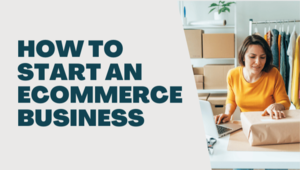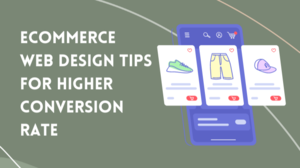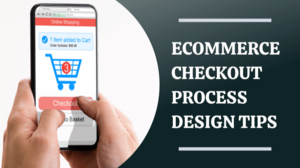How to Run an Ecommerce Food Business An Ultimate Guide
Ecommerce has increasingly become a vital component of the business strategy, being one of the thriving and emerging sectors in web marketing. And like any other industry, within the food industry, ecommerce promises to be a prime area. Especially since COVID 19 broke out, the percentage of ecommerce sales accelerated all-time record pace.
Not too surprising, customer behaviour in the food industry has also changed. Due to the speedy influx of advanced technology, along with the generation Z millennials, tech-savvy consumers of all ages now prefer the streamlined means of browsing to order their desired food products.
So it becomes necessary for every food business to have an online presence. Still on the fence about the ecommerce approach? Read on to know more.
Ecommerce Food Business
Simply, ecommerce food business refers to that process where the food industry deals with perishable and non-perishable foods and beverages to sell the items and services online using the internet.
However, ecommerce not only lets the food industry meet the developing need of demanding customers but can also ease the complex logistics process and cost. At the same time, ecommerce is letting the seller reach out to more customers cost-effectively with no such geographical restrictions. Also, offering a quick and easy way to market online, ecommerce allowed sellers to ensure faster, measurable and trackable sale approaches.
With so many advantages of ecommerce- no wonder ecommerce marketplaces are the ideal option to get higher margins and better cash flow while selling food items online.
5 Food Ecommerce Trends to Follow to Operate a Food Brand
Since the industry is a competitive landscape, to experience the step growing phenomenon, one needs to stick to the right marketing strategy to thrive. The following are some of the arising food ecommerce trends that are likely to stick around to help one stay ahead of the competition.
1. Faster delivery expands
Customers expect faster delivery while placing an order online in today’s highly competitive industry. Also, since fast shipping leads to a high conversion rate, the widespread adaption of faster operations among the retailers is happening to remain competitive. Especially for food ecommerce business, upgrading the delivery time to same-day ensuring food quality become vital as the desire for same-day delivery is noteworthy.
2. Getting a top-notch ecommerce site
Just having a basic ecommerce site with no advanced feature are seen as less credible. The food industry needs to focus on improving the shopping experience on the food ecommerce website by offering fast, mobile-friendly and transparent pages. Suppose if you are a food retailer, you can display your available items by grouping the foods in different category pages, which will be similar to the in-store products organised in the aisle.
3. Content marketing
Today’s customers care deeply about the food product information when deciding between products. And to educate the prospects or current customers about the available food products, blogs or pages filled with informational contents work as a great way. Marketers or sellers use this to increase brand recognition and traffic through the content that people are interested in.
4. PPC search ads
Since pay-per-click search ads have the benefits of getting results fast, the business that wishes to achieve a successful online platform does go for it. For example, PPC advertising is a great way to push a food business profile out in a marketplace. Along with ensuring conversion, engagement and measurable return on investment paid search ads also allow one to target a specific custom audience where you can get as much impression as possible.
5. Targeting past customers
In the world of food ecommerce, offering personalised items via email or a similar platform to past customers depending on their previous purchases is a technique that works wonders. Also, post-purchase marketing such as subscription or renewal services encourage customers to repeat their purchases while building brand loyalty and attracting new customers.
Food law in Australia
In Australia, there are strict rules and regulations that any food business needs to comply with. In the food safety standards covered by several standards in the Australia New Zealand Food Standard Code, we can see the mention of measures that need to be maintained during labelling, pre-market clearance, and other processing.
Under the Food Standard code, a business must take all the practicable measures to prevent contaminated foods since food hygiene matters. Also, the Food Standard Code requires that the labelling and other informational requirements do not contain any misleading information. For example, one label must include the ingredient list, warning statement, food identification, expiry date, allergen information, use direction, and other nutrition information requirements.
Again, depending on the food category, the principles and amendments of food standards, food safety standards and primary production standards are being explained in the Food Standards Code.
Also, in Australia, the National Management Institute (NMI) works in the food sector and assists food retailers to meet the required requirements. Some key responsibilities of this institution include administrating the laws that cover selling food, food testing, physical measurement services and laboratory quality assurance.
7 Must-Have Elements for Food Ecommerce Websites
Once you comply with all the necessary rules and regulations related to your business and have completed all the paperwork to start your business legally, you might ask how to create the business now. Here we have listed a few essential elements you might need to successfully run your ecommerce food business.
1. An attractive, user-friendly ecommerce website
A website can be called the face of a business since it is what your customers will see first to avail of your online products and services. Creating a website is one of the most crucial parts of starting an ecommerce business. You need to ensure a responsive design to make your website accessible on any device. The speed of an ecommerce website is another deciding factor to form the first impression among your site visitors towards a hassle-free shopping experience.
And for a better user experience, ensure that each page of your site is easy to navigate. Be it by tailoring and placing your navigation bar right where the users expect to find it or by diving into the categories of your food products clearly with clickable links. Maintain all the best practices to make sure your navigation is fully responsive.
Also, mind the product information with an accurate description as the primary purpose of an ecommerce website is to showcase the products to the customers. Hence appropriate text with a matching design, colour scheme, theme, images and videos are must-have requirements to keep the products coherent to the visitors and customers.
2. Advanced delivery option
Consider an advanced delivery system for your ecommerce store. And here, the speed and accuracy will matter. Otherwise, if your online food store is not good at the timely delivery setting, it wouldn’t be easy to sell through it.
So to maximise customer satisfaction and minimise friction in the purchase decision, you can try on implementing the same day delivery option. However, if possible, do the same, taking a one or two-hour timeframe to be one step ahead of the competition. Otherwise, this might become the reason for cart abandonment by many shoppers since customers won’t wait that long for food products and prefer a quicker delivery alternative.
Now, when you offer a same-day delivery service to your customers, consider that you have enough tools ready to track, handle, and fulfil an order. Or else a simple payment error or missed order might cost you a negative encounter with repeat sales. So, here an order management system can be effective to monitor the delivery process and collect the necessary metrics, where you can spot issues and make the needed changes immediately to your business.
3. Payment option
While setting up a fully functional ecommerce website, make sure that you keep a few options for your customers to give your customer a more seamless experience.
Since most consumers prefer to pay online, you can keep the option of credit/debit card payment, bank transfer, mobile payment or other alternative payment methods like PayPal, Amazon Pay and Google Pay. And do the proper use of ecommerce payment gateway for faster and more secure online transactions.
Even you can add another popular payment mode- cash on delivery (COD) to exceed users’ expectations and gain trust. This factor remains as a demanded payment mood for online purchases being convenient and straightforward with no risk involved.
4. Dashboard for better order management
When it comes to managing an ecommerce food business, there’s a lot to keep track of, which cannot be monitored with just one ecommerce analytical tool. In an ecommerce dashboard, there will be a set of metrics, KPIs and other data which will be analysed for digging into the ecommerce website performance. There you will get a summary of your business stats, such as the number of orders to net profit and revenue.
In order to maintain a better order fulfilment process, a dashboard for order management can cut down the possible human-derived errors. Such as, it will help you get reports about your stock needs, preventing you from over-ordering. You will get the signal to know if the stock level of the fresh food items gets low or when you have much extra to liquidate.
However, differing from business to business, the sort of KPIs that go on an ecommerce dashboard differs. For example, suppose you run an online food brand that sells grocery items. In that case, your dashboard will focus on essential KPI metrics such as substitution rate, repeat purchase rate, cart abandonment rate, basket size, ratings and reviews, food waste level or out of stock items.
But again, some standard ecommerce KPI metrics are commonly considered worth tracking through the dashboard for any business. This includes bounce rate, clicks, time on site, conversion rate, page load time, traffic source, SEO position, blog traffic, clicks etc.
So when you consider building a dashboard for your food ecommerce business to overview these key performance indicators, these will help reveal the long term insights and detect the significant issues saving your time and effort.
5. Marketing and content/marketing for ecommerce business
Gone are the old days of brick and mortar method of traditional business; the ecommerce business is here to stay. So when there is no doubt in saying ecommerce business will continue to play, it is crystal clear that digital marketing is going to become vital in any retailer’s strategies. Even when the customers are demanding digitals, digital marketing is definitely a sure shot way to power up any ecommerce business with abundant sales.
So when digital marketing is all about connecting with the audiences on the internet, along with other types, the two best channels to do so is through SEO and PPC approaches.
6. A well-developed SEO strategy and content marketing
No matter your business size, SEO is crucial to maximising your ecommerce website’s profitability. Since most customers turn to search engines to find information on products or businesses, search has become an integral part of the decision-making process. And it is SEO that increases the effectiveness of your business’s visibility on a search engine, helping potential customers find you. So once your company has an SEO optimised website, you can expect more customers as twice as fast as those competitors of yours who don’t have one.
When the primary goal of SEO is to capture eyes on the right piece of content, content plays a significant role in terms of effectiveness. Content is everything to an ecommerce business; it is a way to keep customers informed and answer the queries they are searching for. Like for a fresh food ecommerce website, product description is essential, and it needs to be accurate, dependable and complete on driving consumers’ emotions.
Both content and SEO work as a cohesive unit and complement each other. Because when content marketing help in building loyalty, awareness and reputation of a business, it is SEO principles that make those contents well optimised and more visible on search engine.
Take title tag, for example. You need a well-optimised SEO title tag to make your readers understand what your page offers. Since it appears on top of a web browser, it helps the reader quickly identify your web page’s content. But, again, without relevant and rich content, be it blogs, product descriptions or articles, SEO cannot work by itself.
So to succeed in digital marketing and strengthen your authority, you can try on applying SEO in your content marketing strategy. With the right tools and expertise, these two distinctive digital marketing practices can definitely bring favourable results to your business.
7. PPC in your ecommerce marketing strategy
Pay-Per-Click (PPC) advertising is another standard model of digital advertising. You can try on applying PPC for your ecommerce marketing strategy to promote your online store and products targeting your ready-to-buy shoppers. Since ecommerce is data-driven, PPC fits in this business model as you can track your advertising campaign in full-scale by setting your own budget. As here, you only pay when a user clicks on your ads, and you see results. So you are not paying for website traffic that you don’t get.
With PPC, you are enabled to select specific audiences to whom you will be advertising. Also, being one fastest means to run an advertising campaign, you can get an immediate result using PPC. A minute after you launch your campaign, you can get multiple analytics, including the number of impressions, clicks, and conversions. Depending on those, you can determine where your campaign succeeds and where it fails. In addition, as PPC is mostly useful for local searches, you can earn valuable leads that are more likely to convert.
So these are some causes of why you should consider utilising the ever-expanding marketing platform as a way out to market your food ecommerce business.
Why WebCommander
As a business owner, you probably won’t prefer to spend your valuable time managing your ecommerce website when you have more important tasks to perform to keep your business afloat. Hence using an easy website management system can save your time as well as money.
In WebCommander, you will have access to get expert help to set your online store just the way you want. You can allow your food ecommerce business to get all the ecommerce features that you might have missed if you had managed your website by yourself.
With all the elements necessary to run an ecommerce food business website that we have discussed above, you can achieve everything in WebCommander. In addition, you can build your own custom website, including the feature you want to add, be it by adding custom delivery and payment integrations or by including custom widgets and plug-ins.
Let’s take the leading Australian supermarket companies Woolworths and Coles into consideration. Along with delivering the best food using the freshest and finest ingredients, the big companies ensure that their customers consistently get the best service from them. And if we look at their branding strategy, we can see that despite owning over a thousand retail outlets, both Coles and Woolworth run a website and provide online grocery delivery and customer services.
This shows the importance of online presence; after all, a website is that asset of any business that shares information and builds credibility, no matter how big or small your business is. So even if you own a small Ecommerce Food Business, make sure your business has a website to level the playing field. Otherwise, you will risk losing customers to your competitors who are already taking advantage of the online marketplace.
And here, WebCommander could be the right destination to avail your feature-rich ecommerce website. From conversion-friendly design to easy store management, SEO and UX optimised features to advance functionalities like real-time analytics dashboard, WebCommander offers every advanced management feature and integration to make your ecommerce as simple as possible.








